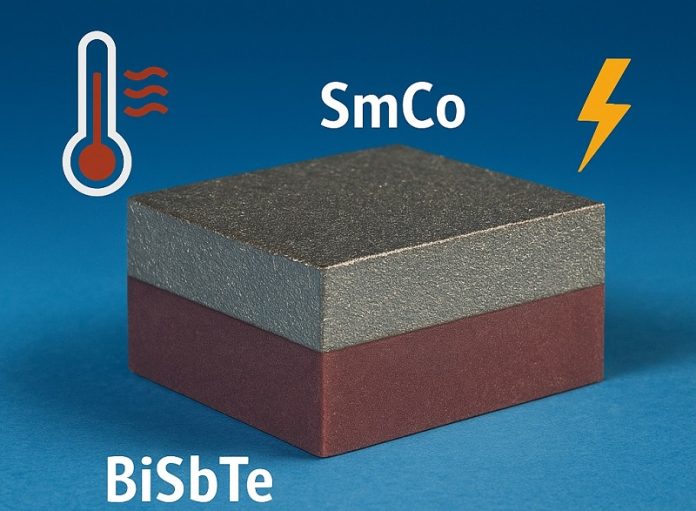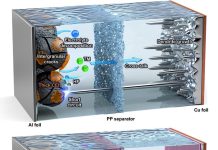
A team of scientists from Japan has created a new magnetic material that can turn heat into electricity more efficiently than ever before—setting a world record for its power output.
This breakthrough, achieved by researchers from the National Institute for Materials Science (NIMS), The University of Tokyo, and Nagoya University, could lead to new ways of collecting and using waste heat for power.
The material, called a “thermoelectric permanent magnet,” combines two different substances: a strong magnet made from samarium and cobalt, and a thermoelectric compound made from bismuth, antimony, and tellurium.
These layers are carefully stacked together and then cut at a tilted angle to form a unique, multi-layer structure.
When heat is applied to this material, it creates electricity in a direction that’s different from the heat flow—this is known as the transverse thermoelectric effect.
Most current thermoelectric devices use the traditional Seebeck effect, which generates electricity in the same direction as the heat flow.
While the Seebeck effect can be efficient, it often requires complicated module designs to separate the heat and electrical pathways.
The new transverse approach offers a simpler design, which could make future devices smaller, cheaper, and easier to build.
Until now, the challenge was that materials using the transverse effect produced much lower performance compared to standard designs. But this new thermoelectric magnet changes that.
In their experiments, the team achieved a power density of 56.7 milliwatts per square centimeter at a temperature difference of 152°C.
This is the highest power density ever recorded for a transverse thermoelectric device and rivals the performance of commercial modules using the Seebeck effect. When they adjusted this measurement to compare power per degree of temperature difference, the performance remained unmatched in its category.
One of the keys to this success was reducing the electrical and thermal resistance where the magnetic and thermoelectric layers are joined. This made it easier for electricity to flow while still capturing heat effectively. As a result, the material reached a figure of merit (zT) of 0.2 at room temperature—about 100 times better than previous transverse thermoelectric materials.
This innovation could one day be used to recover energy from waste heat in industrial systems, electronics, or anywhere magnets are already in use. The researchers plan to continue improving the performance of this material and explore its potential in next-generation cooling and energy harvesting devices.
Their work points to a future where magnets not only attract, but also generate clean, useful energy from heat that would otherwise be lost.
Source: KSR.



